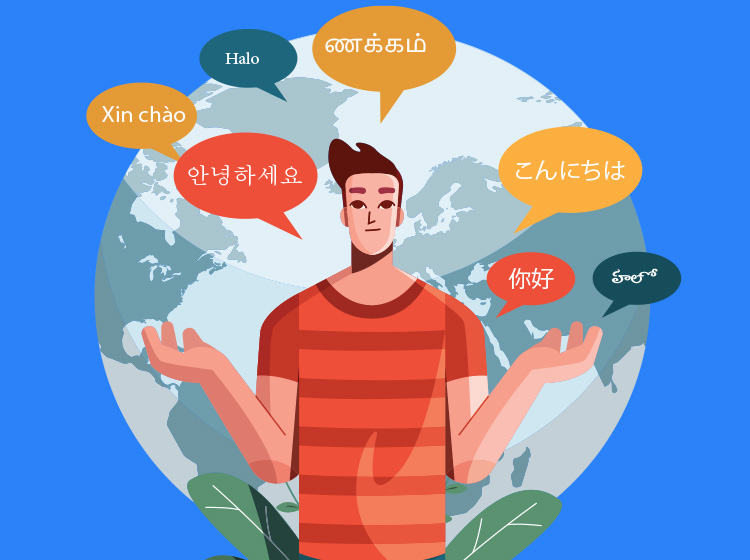Asia isn’t a region you navigate with shortcuts or simplified assumptions. It’s a vast, layered landscape where business decisions carry deep cultural weight, where relationships mean everything, and where timing can shift an entire deal. That’s why lead nurturing—not acquisition—is the real battlefield for B2B companies expanding across the continent.
Most organizations quickly learn that generating leads is only the spark. Sustaining momentum requires time, insight, and unwavering consistency. This is where the discipline behind B2B Lead Generation for Asia comes into play. It’s not simply about building a pipeline; it’s about cultivating trust with every interaction.
Asia’s markets—from Singapore’s fast-paced decision cycles to Japan’s detail-heavy evaluations—demand nurturing strategies that respect each country’s cultural heartbeat. Buyers expect more than information; they expect reliability, industry knowledge, and clear intent. They want to see that a company understands what makes their local environment unique.
In this region, nurturing is not an automated drip—it’s a sustained commitment. It’s showing up with relevance, following through with clarity, and demonstrating professionalism in every step. Companies that invest in long-term nurturing cycles consistently outperform those that chase quick wins. Why? Because Asia rewards patience and substance.
Lead nurturing across Asia isn’t easy, but it’s powerful. When done well, it transforms uncertain prospects into confident partners. It turns brand visibility into brand credibility. And ultimately, it becomes the engine behind successful B2B Lead Generation for Asia across every industry.

Understanding Regional Diversity in Asia’s B2B Market
Asia may share borders, but it doesn’t share buying behavior. The region is a mosaic of cultural expectations, communication styles, and decision-making rhythms. What works in one country may fall flat in another, and understanding these differences is the first step toward building nurturing programs that actually resonate.
Take Japan, for example. Formality, precision, and long-term rapport define professional interactions. In contrast, Singapore values speed, efficiency, and straightforward communication. Meanwhile, Indonesia and the Philippines prioritize warmth and personal connection long before a contract appears on the table.
This diversity is why effective B2B Lead Generation for Asia hinges on respecting the local business DNA of each market. A unified regional campaign rarely succeeds without thoughtful localization. Messages must feel familiar, relevant, and culturally aligned.
Digital maturity also varies widely. South Korea and Singapore operate in highly advanced digital ecosystems, while emerging markets may prefer mixed digital and offline touchpoints. These nuances shift how nurturing should be structured. Some audiences prefer structured email sequences. Others rely on messaging platforms or even in-person conversations.
Understanding this diversity doesn’t complicate nurturing—it clarifies it. It gives marketers the map they need to architect personalized journeys that move buyers forward in ways that feel natural, not forced. When regional insight becomes part of the nurturing foundation, companies unlock stronger engagement and build authority across borders.
Ultimately, the organizations that master Asia-wide nurturing are those willing to adapt, observe, and learn from each market. They treat differences as strategic advantages—and that mindset becomes the cornerstone of successful B2B Lead Generation for Asia.

Key Strategies for Effective Asia-Wide Lead Nurturing
Effective nurturing in Asia happens when companies stop treating prospects as part of a funnel and start treating them as part of a long-term relationship. It’s not about pushing harder—it’s about guiding smarter. And the most successful organizations follow several key strategies to make that happen.
The first strategy is sharp segmentation. Asian buyers are too diverse for broad, generic targeting. Segmentation based on country, industry, buyer role, and intent helps ensure every message is relevant. When content speaks directly to a recipient’s context, engagement skyrockets.
Second, contextual personalization is a must. This goes beyond token personalization. It means tailoring tone, examples, and proof points to local norms. A case study that works in Malaysia might not resonate in Japan. A conversational approach appreciated in Thailand may seem unprofessional in South Korea. Personalization rooted in cultural understanding is the real differentiator in effective nurturing.
Third, nurturing requires multi-channel presence. Asia’s digital ecosystems vary widely. LINE dominates Japan and Taiwan, WeChat is essential in China, and WhatsApp is the go-to channel in Southeast Asia. Companies that succeed in B2B Lead Generation for Asia show up where their prospects already communicate.
Fourth, nurturing must deliver consistent value—market insights, industry updates, thought leadership, and meaningful follow-ups. Asian buyers want to know that a company understands their challenges and is committed to addressing them.
Finally, patience is perhaps the most important strategy. Asia’s buying cycles are often long, deliberate, and consensus-driven. Trust builds slowly—and steadily—and nurturing should match that pace.
These strategies turn nurturing into a powerful engine for long-term growth across Asia.

Leveraging Technology and Automation for Cross-Asian Nurturing
Technology, when used wisely, becomes a powerful amplifier for nurturing efforts across Asia. It creates structure, enhances personalization at scale, and keeps cross-border operations running smoothly. But the key is using digital tools without sacrificing the human nuance that Asian markets value.
CRM systems act as the backbone of strong nurturing. They house data, track interactions, automate workflows, and give teams visibility across regions. Without a solid CRM foundation, even the best regional strategy falls apart. Companies leading in B2B Lead Generation for Asia rely on CRMs not just to store data—but to strategize from it.
Automation brings efficiency and consistency. Behavioral triggers, personalized sequencing, and scheduled touchpoints keep leads warm even when teams are stretched across time zones. This ensures no prospect slips through the cracks.
AI-driven lead scoring sharpens prioritization. Asian buying cycles can be unpredictable, but AI identifies signals—content engagement, event participation, platform activity—that indicate readiness. This helps sales teams focus on high-value opportunities.
However, automation should never override cultural sensitivity. Localization matters. Messaging for Japan should not mirror messaging for India. Timing, tone, frequency, and even communication channels must adapt to local expectations.
The right combination of automation and human judgment creates a scalable nurturing ecosystem. It supports long-term trust-building, sharpens timing, and strengthens every touchpoint. Technology doesn’t replace human relationship-building—it enhances it, transforming nurturing into a strategic advantage for B2B Lead Generation for Asia.
.png)
Challenges Faced by B2B Companies in Asia-Wide Lead Nurturing
Asia’s opportunities are massive—but so are its challenges. Companies entering the region often underestimate the complexity of nurturing leads across such diverse markets. The obstacles aren’t roadblocks; they’re realities that require strategic preparation.
The first challenge is language diversity. Asia contains hundreds of languages and dialects. Localization isn’t just translation—it’s interpreting meaning, tone, and cultural signals. A poorly localized message can damage credibility instantly.
Second, regulations vary dramatically. Data privacy laws differ across China, Japan, Singapore, and Southeast Asia. Compliance requires meticulous attention and local understanding. Mishandled data is a reputation killer in Asian markets.
Third, digital maturity isn’t uniform. Some countries operate in sophisticated digital environments, while others still depend heavily on offline interactions. Companies need hybrid nurturing models that blend digital tools with human-driven engagement.
Fourth, buying cycles are long and relationship-intensive. Many Asian cultures value internal consensus and trust. Decisions often involve multiple stakeholders, and nurturing must remain steady throughout the extended process.
Fifth, data consistency is a persistent challenge. Incomplete records, fragmented tracking, and varying CRM adoption can weaken nurturing flows.
Despite these challenges, companies that commit to regional understanding, process discipline, and cultural respect consistently excel in B2B Lead Generation for Asia. They embrace complexity and turn it into a competitive advantage.

Best Practices for Scaling Lead Nurturing Across Asian Countries
Scaling nurturing across Asia requires a strategic blend of structure and sensitivity. The companies that expand successfully follow a set of practices that ensure they stay consistent without becoming rigid.
First, they build a regional nurturing framework—a core structure for messaging, cadence, value delivery, and brand voice. This maintains consistency while still allowing local teams to customize according to cultural expectations.
Second, they invest in localized content creation. Asian buyers respond strongly to case studies, testimonials, and insights tailored to their region. This builds relevance and demonstrates commitment to the local market.
Third, they unify marketing and sales teams under shared KPIs. Alignment eliminates lead leakage and ensures that nurturing flows continue smoothly from first touch to final decision.
Fourth, they prioritize relationship-building activities. Webinars, industry events, community engagements, and personalized follow-ups carry tremendous weight in Asia’s relationship-driven markets.
Fifth, they treat nurturing as a continuous optimization process. Asia evolves quickly, and companies must adjust content, timing, and channels to match shifting expectations.
These best practices form a sustainable foundation for B2B Lead Generation for Asia, helping companies scale influence, credibility, and conversions across borders.
Conclusion & Key Takeaways
Asia’s complexity isn’t a challenge—it’s an advantage for companies willing to adapt, listen, and nurture with intention. Lead nurturing across the region requires patience, cultural intelligence, and disciplined execution. But when done well, it becomes the ultimate differentiator.
Companies that excel in B2B Lead Generation for Asia understand that nurturing is not about pushing leads forward—it’s about guiding them thoughtfully, consistently, and respectfully. In Asia, trust isn’t a strategy; it’s a currency—and nurturing is how companies earn it.
The path to long-term success lies in understanding regional diversity, applying strategic personalization, leveraging technology with care, and building relationships that stand the test of time. Asia rewards those who commit to depth, not shortcuts.
Lead nurturing is how companies stop being just another vendor—and become a valued partner across the region.




